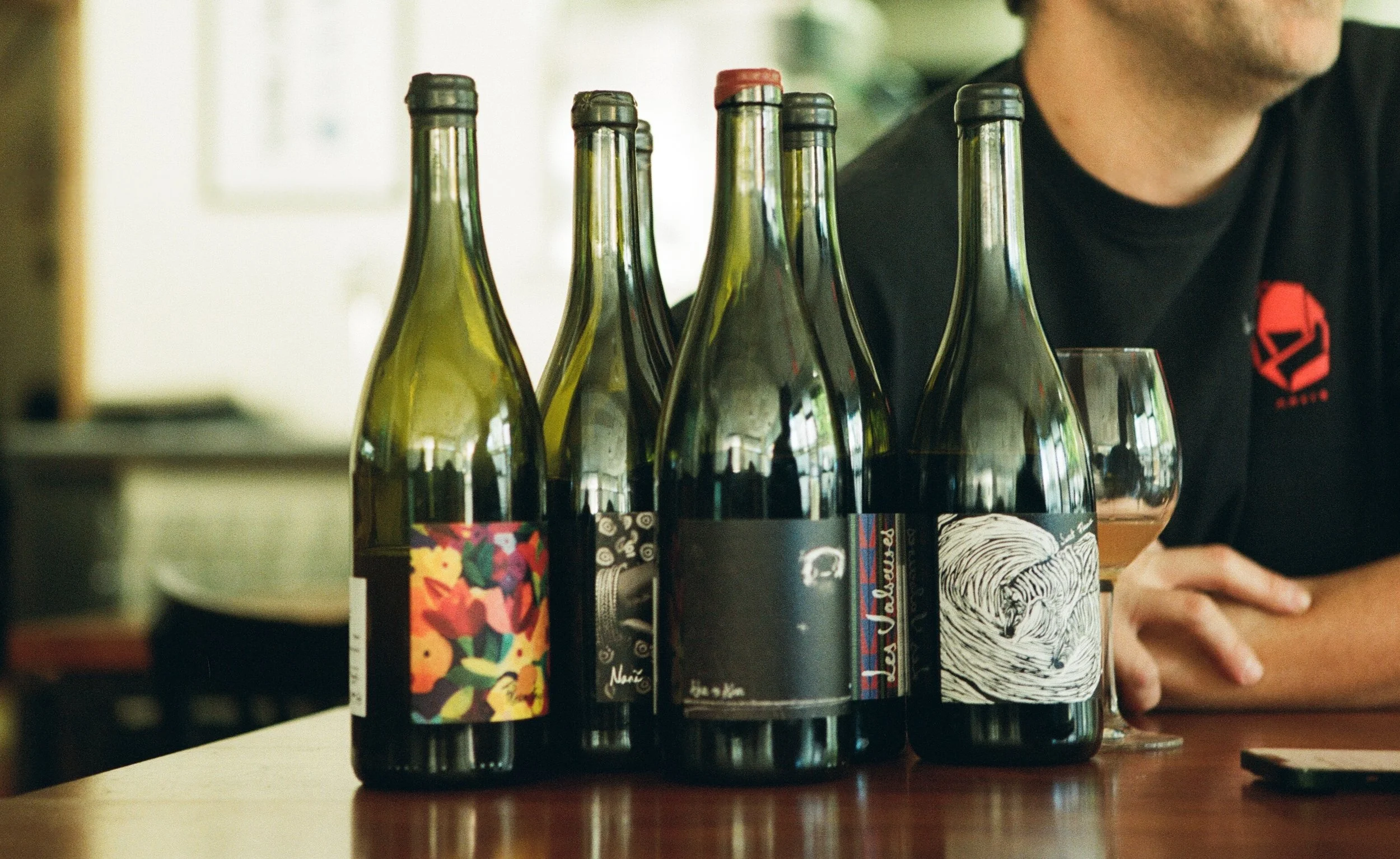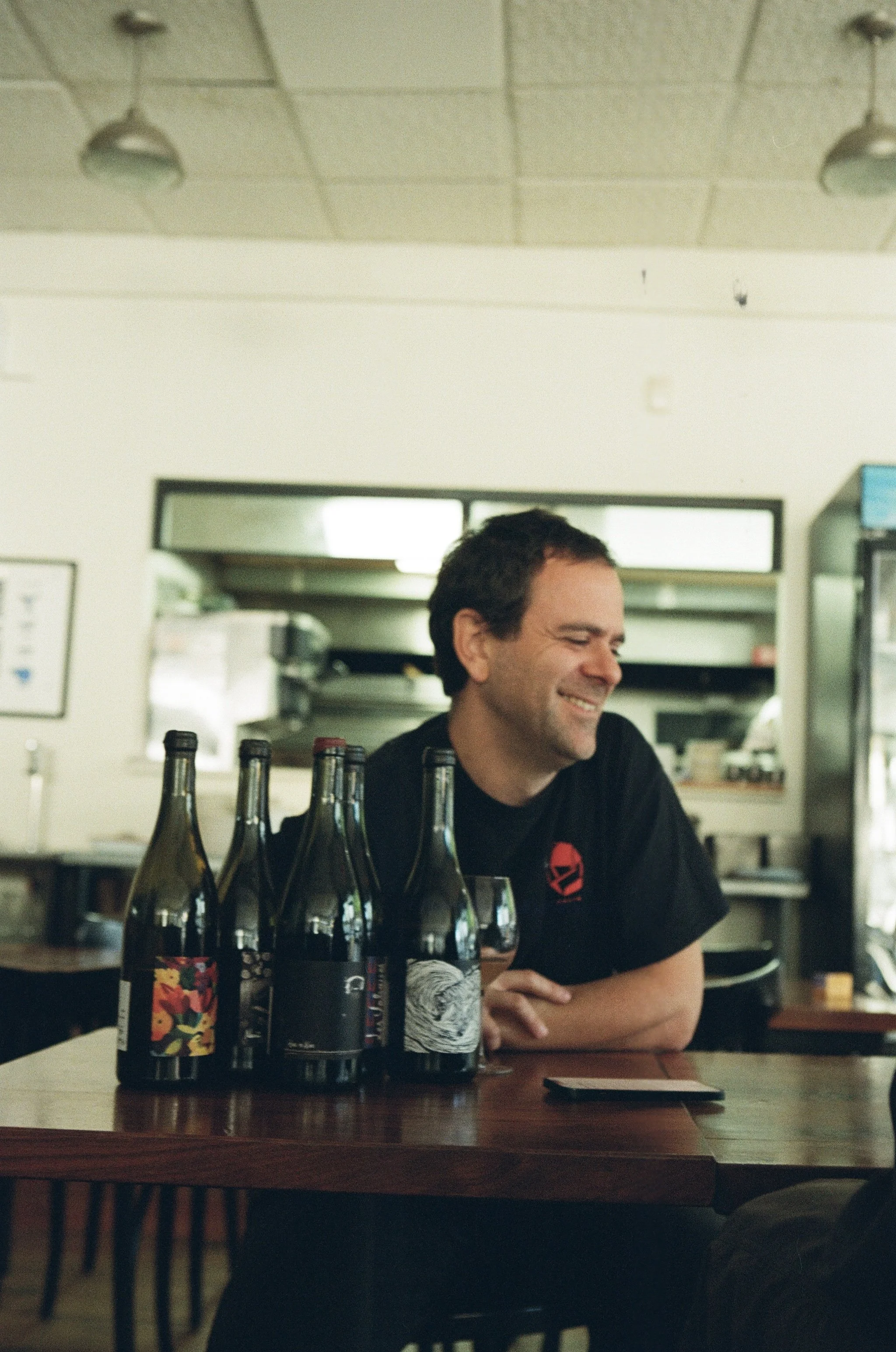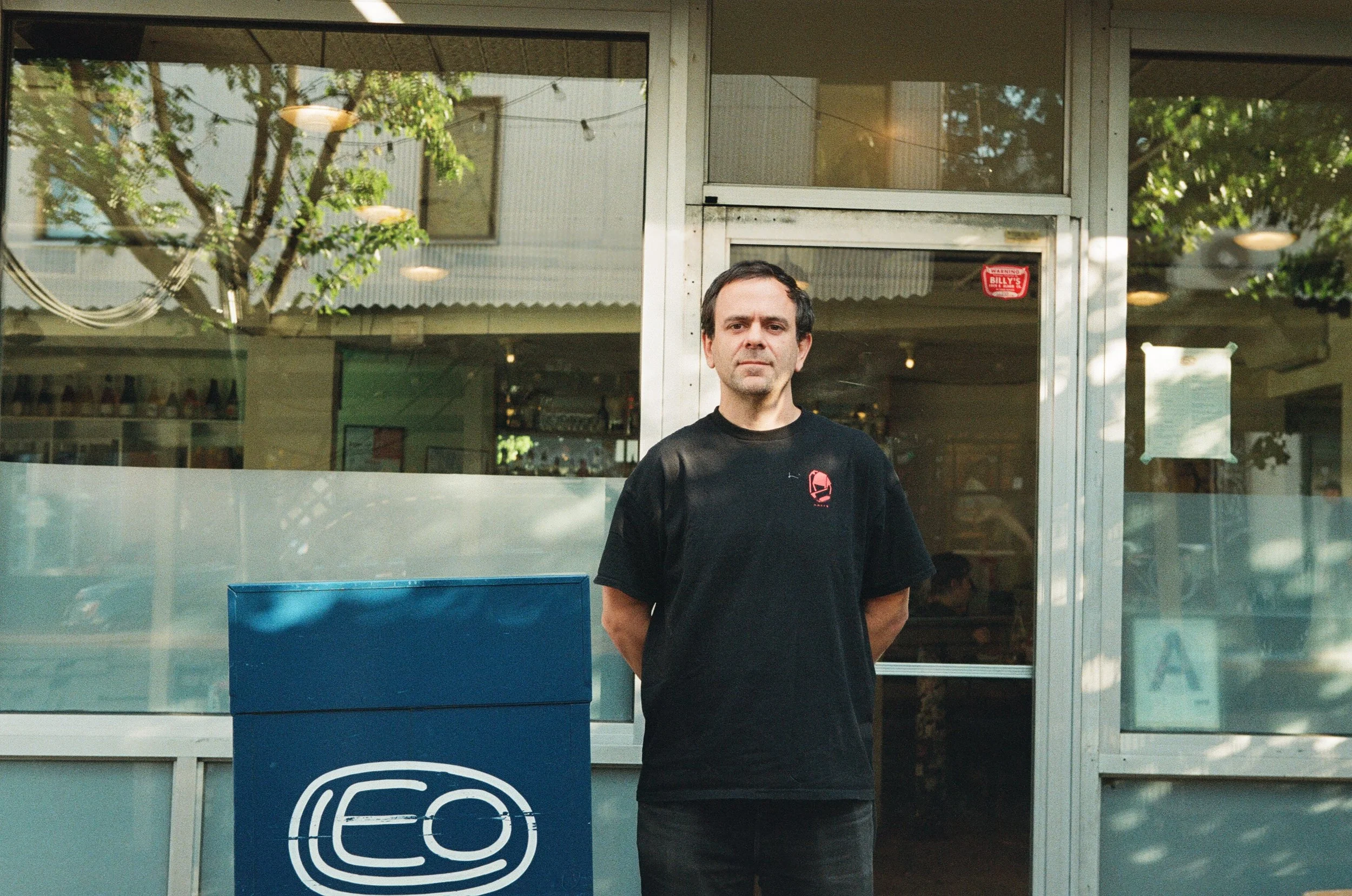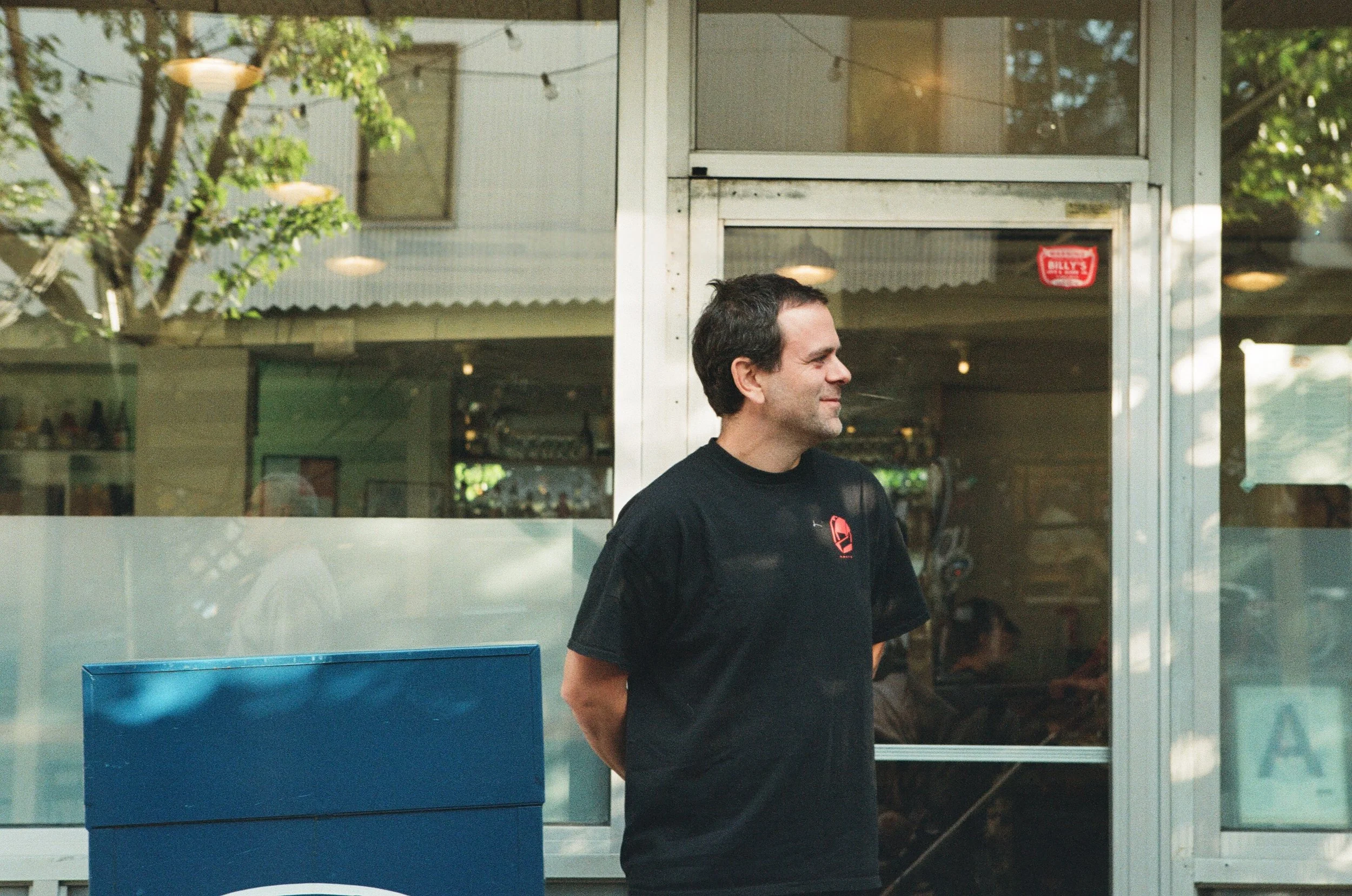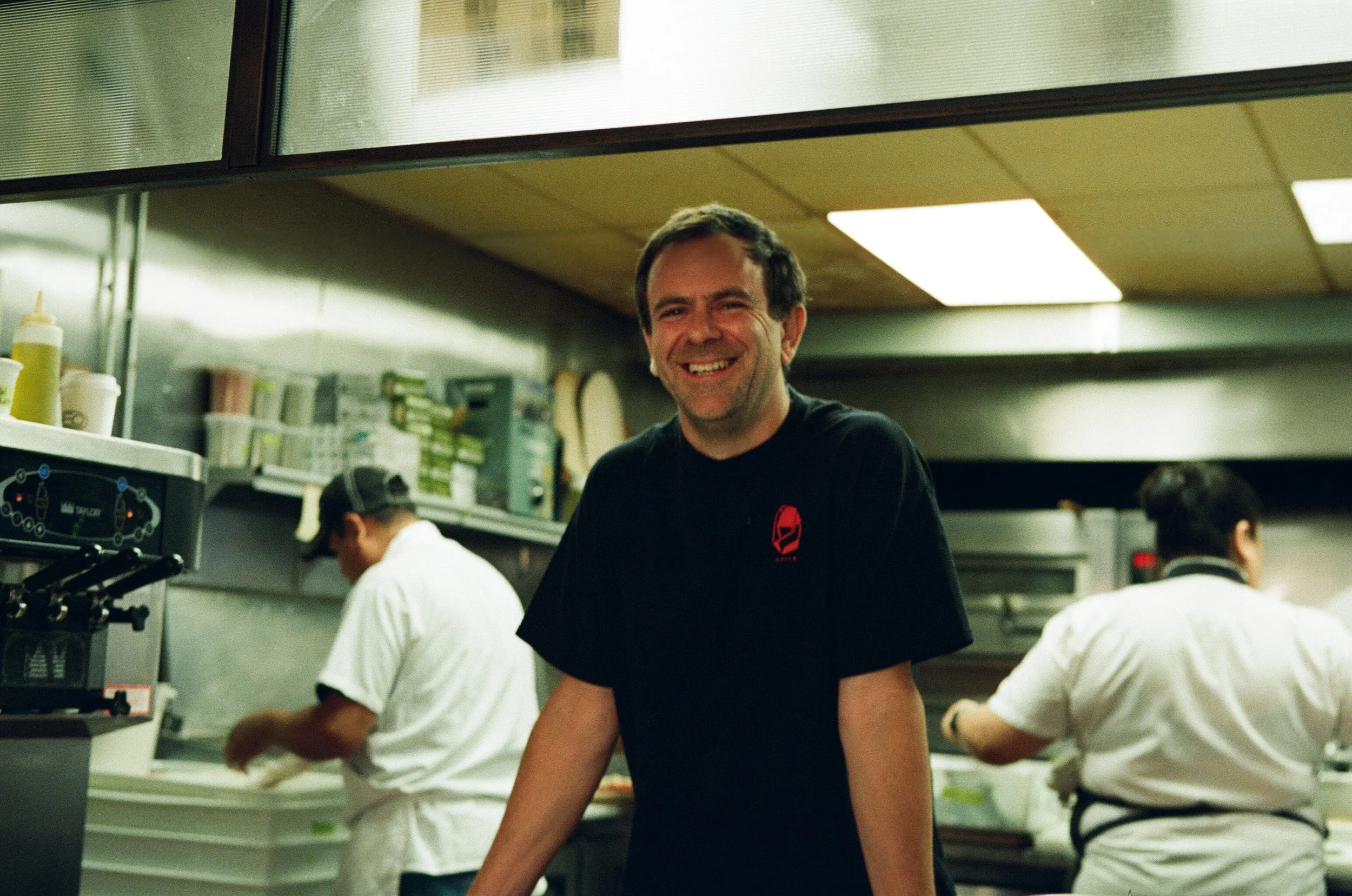What Mike Fadem Is Drinking Right Now
The pizza / wine impresario behind Leo and Ops is on a Jura kick.
Words by Nathan Bodenstein
Photography by Joana Meurkens ©
The question, “what are you drinking these days?” may sound deceivingly simple. But, with so many incredible bottles to choose from – as well as so many new producers emerging, and so many regions expanding their footprints – it’s anything but. That’s why we’re challenging wine industry titans to pause and recount (on the record) what’s captivating their attention right now.
Enter Mike Fadem and Gavin Compton, the duo behind two of New York’s most beloved pizzerias: Ops, founded in 2016, and Leo, established in 2019. Both spots are renowned for their thoughtfully curated wine lists, offering hard-to-find back vintages and beloved classics — all at price points that seem concerningly approachable. It’s no surprise that, in recent years, both spots have become go-tos for wine professionals and enthusiasts alike.
Before opening Ops, Mike honed his skills with the venerable Andrew Tarlow at Marlow & Sons, Achilles Heel, and Roman’s, before moving on to the Michelin-starred Estela. And while he’d initially set out to build a wine bar, his vision quickly developed into a comprehensive pizza joint. Then, two pizza joints.
We sat down with Mike to chat about what he’s drinking right now, his love of the Jura, and his secrets to curating a great wine list.
What’s the best thing that you drank this month?
I’m obsessed with a wine that just dropped from Les Valseuses, a winemaking duo – Antoine and Julia – based out of Arbois in the Jura, called Funky Calypso. The wine’s a blend of red and white grapes – Cabernet Sauvignon, Syrah, and Vermentino. Julia and Antoine are really good at putting a spotlight on a lot of unique flavors that are still drinkable, fruity, and delicious.
This wine in particular reminds me of old school natural wines with lots of texture, body and tannin – but it also has an easy, fruity finish that makes you want to keep drinking it. It’s great with food, great on its own; kind of all of the qualities we [at Ops and Leo] look for in a wine.
Photography by Joana Meurkens ©
What would you pair Funky Calypso with at Ops and at Leo?
This is a wine that really goes well with a saucy, tomato-based pizza. Ideally, something with sausage – so the San Giuseppe [tomatoes, spicy sausage, onions, olives, provolone] at Leo and the Pops [tomatoes, house mozzarella, guanciale, onions, pecorino] at Ops would both be perfect pairings.
I know you recently visited Antoine and Julia in the Jura. What was that trip like?
We had Julia and Antoine here for an event last November, and it was really an amazing time. We hadn’t met them before, but we knew their wines a little from a previous tasting in France. They stayed for a week, and we had a blast—really hit it off.
Later, when I was planning a trip to the Jura, I reached out to them, and they were like, “Yup, you’re staying with us, and you have to hang out with us. Let us show you around.”
Photography by Joana Meurkens ©
Antoine and Julia have a new vineyard, and the vines are only 5 years old. They had planted the vines themselves and I didn’t realize how much work goes into it every year. I thought you might do a little bit of work and then eventually good fruit would start producing, but they put in as much effort as you would on a mature vineyard that’s already producing grapes and wine.
Did they ask you to make pizza with them?
Haha, yes, they did. And it was so cool. Their daughter is amazing, and so is their dog. I spent a lot of time with them cooking and working in the vineyard. Antoine, who loves making steak, prepared this incredible steak— it was an unforgettable meal. They welcomed us into their home, showed us around town, and introduced us to their friends and other winemakers.
What was your take on the Jura – specifically, Arbois?
Well, I had never been to the Jura, and it was really interesting. I was speaking with some importers the other day about the area, and it’s so different from other parts of France. There seems to be no competition—it’s very familial. All the winemakers are friends, and they regularly talk about farming techniques, climate change, and the different winemaking methods they’re using.
We got to see that firsthand while hanging out with Antoine and Julia, because they’re friends with everyone. Winemakers would just come over and hang out at their house. I didn’t realize it was like that there. I’ve been to other parts of France, which are always beautiful, but I noticed that Arbois is more community-driven and focused than other regions. It was really special to experience that, and it sheds light on why the Jura is so unique. We wine people have been hearing about it for a while, but going there, seeing it, and even watching Pierre Overnoy walk by with his cane, waving at everyone—it’s just very sweet.
When did you first start to develop an interest in wines from the Jura?
It started years ago with my mentor, Lee Campbell, who definitely instilled in me the generosity that winemakers have, and that wine lovers who spend time with winemakers come to appreciate. We would drink Overnoy, and those wines tasted like no others—the fruit, the minerality, the texture—it was spectacular. Back in the day, when we were drinking them, they were much less expensive and slightly less rare than they are now. That was my first introduction to the area. Later, I worked with the importer Camille Riviere and dealt with Bénédicte et Stéphane Tissot for years.
What’s your general approach to buying wines for Ops and Leo?
The ideal wines we’re buying are dynamic — wines you want to keep coming back to. When I find wines I like, I drink the same thing over and over again because I crave them. Just like how pizza is a craveable food, a lot of the best wines are craveable too.
I really need acidity, a bit of fruit, and an overall balance in a wine—something you taste and want to keep drinking. It’s the kind of wine where you don’t want to put the glass down—that’s what we’re always looking for. And when you offer that to a customer, they trust you, keep coming back, and you create a great vibe in the room.
Think about the end of a workday, when all you’ve been thinking about is the meal you’re going to have, the drink you’ll enjoy. It’s those moments that kind of make life worth living.
How would you describe your wine list?
The wine list aims to be comprehensive, featuring a variety of regions and a range of wines from each. When you run a pizzeria, you have to consider the diversity of people coming through the door. We try to cater to different preferences, ensuring there’s something for everyone, while staying true to our ethos of supporting good farming and ethical practices from winemakers. It’s about fostering a whole network of positive energy — feeling good about what they do, what we do, and, hopefully, creating a positive experience for our customers. That’s the general idea of our wine list: offer enough wine for everyone while staying aligned with our values.
How do you make sure your wine list stays affordable?
The idea is always to make things approachable. I’d love for wine nerds to have the chance to drink wines they wouldn’t normally drink on a regular basis, without worrying as much about the price. I think of the wines the same way I think of the winemakers —who are often casual, down-to-earth people—and I want wine, especially natural wine, to feel accessible. Wine is mostly made by peasant farmers, and those are their words, not mine. You don’t need to put on a suit to enjoy a $100 bottle of wine. Sometimes, I think the price doesn’t necessarily reflect the quality of the wine. It’s usually based on rarity and the limited quantity produced, rather than whether it’s better than this or that. The price is not always the marker of quality.
That’s where our job comes in — to select wines that belong together on the same list. The main goal is to avoid price barriers, and that’s something we’ve been focused on from the start. Early on, we realized we couldn’t make money on certain things we were offering, so we came up with a recipe that keeps us going while allowing customers to feel comfortable with the prices, confident that they can order whatever they want. Ultimately, I want people to come and have a great night. I always hope that when people make the trip to Bushwick, they have a great time, feel that it was worth it and come back again.
What makes the wines from Les Valseuses compelling enough to make the cut on your wine lists?
Having a relationship with winemakers is definitely important. I think all importers would tell you the same. When you build a connection with a winemaker, you trust what they do more. I wouldn’t say I wouldn’t have their wines on the list without knowing them, but knowing how great they are as people and seeing their work firsthand makes us want to showcase even more of their wines.
At Leo, we have a small list, and at Ops we have a larger one. But at Leo, we have three of their wines, which is a significant amount of real estate for a small list. They produce a lot of cuvées, and the ones that stand out—I want them. I want everybody to try them.
Do you think Les Valseuses will continue to grow?
Antoine and Julia are winemakers who studied from some of the greats—Alice Bouvot, Jean-Marc Dreyer and Patrick Bojou, for instance—which is a telltale sign that they’re on their way to becoming great themselves. Winemaking is incredibly tough because you only do it once a year. So even winemakers with five years of experience are still quite new and constantly learning.
Anyone who has worked multiple seasons at a larger winery that produces a lot of wine has gained valuable experience and learned a great deal from their time. Visiting Antoine and Julia, and meeting the young winemakers who have emerged from their circle is inspiring. They’re always talking about the work they’re doing and learning from each other.
Photography by Joana Meurkens ©
Les Valseuses US Importer: Venture Studio Imports


